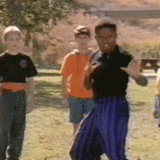mook jong man
Senior Master
ok


Follow along with the video below to see how to install our site as a web app on your home screen.
Note: This feature may not be available in some browsers.

so you are referring to 18 specific techniques from the weapons forms that can be used in empty hand fighting?
can you give some examples of how you attack aggressively to close the gap?
I'm starting to wonder where mook pulls all of these gifs and images out from!
I don't think I could have found something like that in a month..
I bet he's been waiting patiently to use that one for some time now..
when recieving what comes, do you also step forward to intercept or wait until the attack comes to you?Or receive what comes.
Ok, so you use the side pole punch like a jab in boxingPole gives you side position one arm forward.
what are the different stepping variations that you use from the knife set to step forward and intercept the opponent's attack?Knifes not side on 2 arms.
Is your tan to clear the line and punch done in one motion, or rapidly one after the other?Basic empty hand example.Your opponent facing you with a left lead. Basic boxing position. You in basic wing chun stance. You don't watch his hands. His hands don't matter you watch his body for any movement. Hands don't matter because you know what he wants to do with a jab, hit you in the face. So upon any motion or if you are in your range you move forward with right tan and right leg to close the distance as he is punching at you. Your tan will either intercept on inside or outside. Either way the tan opens a line, then that hand continues forward as a punch.Kicking also comes in here as well and can be the bui movement. Key is move into the attack ,open a line and continue through the opening..
Jens, good questions but I hesitate to give any more detailed answers than already given as it may be counter productive for some.
While in theory we all do wing chun with the same understanding and operational mechanics in practice this is not true.
To illustrate I had certified sifu from Canada come visit for some advanced training. I knew and had spoken to this mans sifu many times on the phone. He seemed to have a good understanding of wing chun . I was surprised to find that his student did not have an understanding of the operational basics. I even took the visitor to train with my friend Phil and his students to give him the widest possible exposure to wing chun operation as possible. Phils wing chun is from a different source than mine but we share the same understandings. It is not a my way or the highway thing.
So you see even someone that trains for years and years and teaches others may not actually have what I consider basics.
With out touching your hands there is no way for me to know.
The way I do wing chun is based on the basics I was taught and use. If you do not have the same foundation than doing things the way I do them may not work for you and even could work against you. I provided a general place to look for the information within the system. So look there and then apply things the way you have been taught to apply wing chun
In my recent sparring, I've been laying back, waiting for them to come to me, as soon as they move in, taking a step to be in range to hit me, I will crash in and destroy their balance and follow up with chain punches and kicks. until we reset, and than repeat.
I think this is the best approach for WT/WC sparring.
While sparring long, continuous rounds are good for building stamina, which in turn will build mental toughness, ie. fighting spirit, I believe it to be counterproductive to good WT skills development.
Sparring, with its give and take, I hit you, you hit me, is not how WT people should train.
Remember, we are a fighting system, and a real fight should be over in a matter of a few seconds, not in a few rounds.
When your opponent attacks, intercept, and dominate.....chain punch, kick, knees elbows, whatever presents itself. Go for 5 or 6 seconds and then reset.
It's important that your training partner resist during this 5 or 6 seconds, not simply throw his initial attack and then stand there and take a beating.
By having him resist, you will be developing real world sensitivity to use against a violent attack, not merely theoretical concepts developed during chi sau.
Also, don't always start from long range. Mix it up. Sometimes have your opponent start from boxing range, or right in your face. I know in a perfect world we would keep our opponent at range and intercept, but bad guys don't always cooperate. So vary the ranges and positions you start from.
In my recent sparring, I've been laying back, waiting for them to come to me, as soon as they move in, taking a step to be in range to hit me, I will crash in and destroy their balance and follow up with chain punches and kicks. until we reset, and than repeat.
